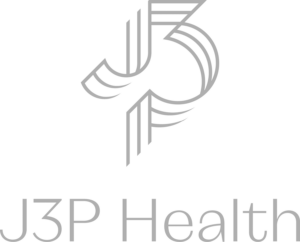WHY TAVR?
When TAVR first emerged, this procedure was primarily performed in academic, quaternary, tertiary-type centers. But as time goes on, more and more community-based open-heart centers are offering TAVR as well. There is no question that TAVR is growing at a rapid pace, but there are many more entrants into the market.
At Corazon we are seeing an interesting phenomenon occur. The larger centers that have been doing TAVR for a while are seeing their market share decline despite volume growth; so strategically they are in a protection mode. And the new entrants into the market likely made the strategic decision to begin a TAVR program because of the rapid market landscape and shift to minimally invasive, knowing they will be left out if they DON’T offer it. In fact, when we survey our clients, the single reason why their organization implemented TAVR, or are considering offering it, is they know TAVR is the wave of the future. BUT, due diligence on what the market and financial feasibility is for the hospital is still a best first step.
FINANCIAL CONSIDERATIONS
While we/you inherently know that TAVR does not have the margins SAVR does, there are many factors that play into bottom line financial performance. Areas of greatest impact include reimbursement, implant cost, and volume and length of stay.
- Reimbursement: First, Medicare payment varies dramatically in various areas of. The DRG payments are much higher on the east and west coasts than in the midsection of the country, and that is appropriate based on the cost of delivering healthcare in different regionals. So, you must understand your specific Medicare reimbursement for TAVR (wage index, quality adjustments, etc.). Second, Medicare has steadily decreased reimbursement since FY15 because of the clinical advances and trials as well as length of stay declines.
- Implant Cost: The average TAVR reimbursement is $40-$50,000, so what makes the margins so tight? The single driver for the high cost of TAVR is the cost of the valve itself with a range of $30-$35,000. Unfortunately, current status is not likely to change since there are only three manufacturers in the market. Future predications within the next 10 years indicate that this will dramatically decrease since several others are seeking FDA approval in the US such as Abbott, JenaValve, and New Valve Technology.
- Volume and Length of Stay: One way to fight against this vendor strong hold is the more TAVR volume performed, the more likely that the vendor can provide price reduction incentives on the valve price itself or through a rebate program. Knowing that the valve cost eats up 75% of the revenue, there are other costs that can be influenced like LOS. The Medicare GMLOS for DRG 266 = 3.2 days; however, we have clients that discharge TAVRs in a day or two. Right now, TAVR is deemed an inpatient-only procedure. But with the gradual removal of the inpatient only list over the next three years, Corazon anticipates TAVRs will be performed as an outpatient procedure within the next five years.
An individual program can’t change reimbursement, and it’s difficult to influence implant vendor pricing, so cost savings must be achieved in the form of operational efficiency. You must be as efficient as possible to for your TAVR program to be financially sustainable.
DATA INTELLIGENCE TO TRACK THE HALO EFFECT
Using data to track financial performance is a powerful tool. It can be used to not only track contribution margin of each TAVR case, but also to account for any rebates and downstream revenue. Oftentimes, rebates are not allocated to the department and are posted to the overall hospital. If you oversee your TAVR program, you need to make it your business to understand how much rebates are worth because the last thing you want to do is show a negative margin if that’s not the reality.
Additionally, TAVR has a “halo effect” since it brings additional cases to the hospital. The “halo” comes from tests performed during screenings and workups and then the Non-TAVR procedures (cath, PCI, SAVR) that some screened patients will subsequently receive. TAVR is highly dependent on pre-procedural imaging, which includes EKGs, PFTs, and advanced imaging studies such as CTAs and TEEs. There was a study done by a community hospital offering TAVR that showed of 28 TAVR patients, there was a total of 116 tests as part of the work up — that’s four tests per patient.
CONCLUSION
In summary, the most financially stable programs are those with higher volume, higher reimbursement, and lower costs. However, there should be more to the decision than just the finances. There is no doubt that TAVR is THE future to treat aortic stenosis, so this consideration should absolutely be a short-term strategic decision for your hospital. You have to ask the question, “What is the financial risk of NOT doing TAVR?”

 company
company 
 (412) 364-8200
(412) 364-8200


























